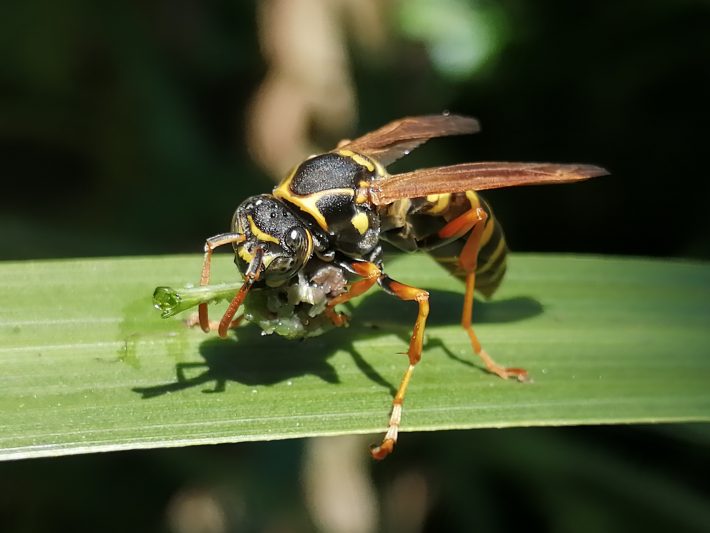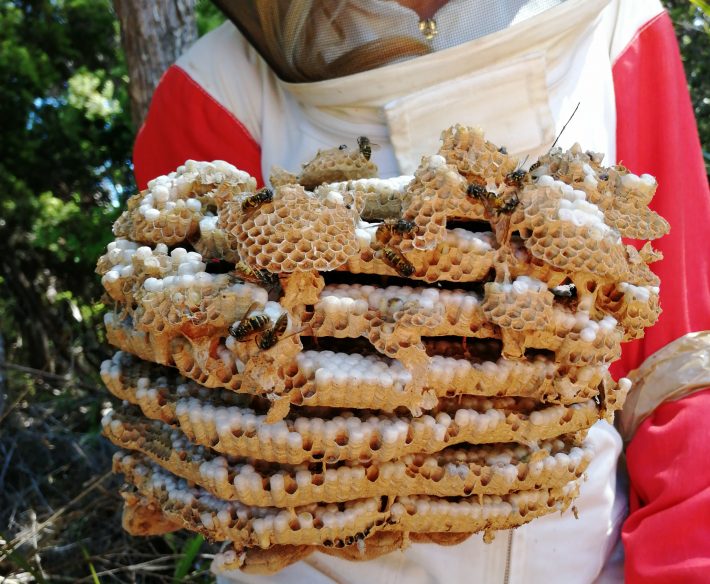Wasps share resources on offshore island
A study of invasive wasps on an island off the coast of Coromandel Peninsula shows they are able to share resources such as food and habitat instead of competing with each other, a worrying result for conservation. The findings are published in the Journal of Applied Ecology.

Introduced social wasps are a major problem in New Zealand, competing for food and preying on native species. They are a particular problem in South Island beech forests where they eat large amounts of honeydew which would otherwise be available for birds, bats, insects and lizards.
Introduced wasps are widespread throughout New Zealand, with earlier work showing that paper wasps are abundant on many northern offshore islands.
The latest study sought to find out what prey the wasps on Great Mercury Island (Ahuahu) are eating and which areas of the island each wasp species inhabits. Four invasive wasp species can be found on Great Mercury: Vespula vulgaris, V. germanica, Polistes chinensis antennalis, and P. humilis.

The research team mapped and collected 64 active wasp nests from the Island, extracting DNA from faecal material to identify prey species that had been caught by foraging wasps and fed to their larvae.
The team used a new method of DNA bar-coding in the study and compared their samples to the Barcode of Life Database (BOLD) to match the codes to prey species in New Zealand.
They found that on Ahauhu, each wasp species settled in different habitat. Nests of both Polistes species and Vespula germanica were found in open grassy habitat or native restoration plantings. Vespula vulgaris nests, in contrast, were found exclusively in the forested habitats, both pine plantation and kanuka/manuka forest. Interestingly, despite intensive searching, no wasp nests were found in the remnant of mature native forest.
The wasps are generalist feeders, preying on a wide range of native animals and the study found they were splitting food resources on the island. They consumed mostly native invertebrates, particularly moths, but also beetles, flies, weta, solitary wasps and spiders.
While we found they exploited different food resources, we know they feed on a wide range of native species causing considerable ecological impact on the island
– lead author Dr Julia Schmack says.
“The findings suggest that because the four wasp species split resources, they are able to coexist on the same island. They are voracious predators and our study shows that, unfortunately, they are not competing over food but sharing it and likely won’t be out-competing each other any time soon.”
Such insights are important for understanding community assembly of invasive species and assessing the overall effect of multiple invaders on an ecosystem.
Co-author Professor Jacqueline Beggs says invasive species cause significant problems all over the world but few studies have looked at multiple invasive species at the same time.
“This study has real implications for our understanding of how invasive species interact as well as for invasive wasp control in New Zealand,” she says. “By understanding their combined ecological impact, at least we have a better chance of developing strategies to better protect our valuable native species.”
You can read the research article in full for free (for a limited time) here:
https://besjournals.onlinelibrary.wiley.com/doi/10.1111/1365-2664.13856
Media contacts:
Anne Beston | Senior Media Adviser
DDI:09 923 3258 Mob: 021 970 089
Email: a.beston@auckland.ac.nz
Like what we stand for?
Support our mission and help develop the next generation of ecologists by donating to the British Ecological Society.